Hiraizumi’s Cultural Properties
Historic Site / Place of Beauty
The Winds of Jodo are Blowing
Sites where a big event in Japanese history occurred, important “historic sites” for learning lifestyles of the time, and especially important places are preserved as “Special Historic Sites.” In addition, important places considered to be beautiful are known as “Place of Natural Beauty” or “Special Place of Natural Beauty.” Hiraizumi has in it six Special Historic Sites and Historic Sites, and the Mōtsū-ji Gardens and Kanjizaiō-in Gardens have been designated as a Special Place of Natural Beauty and a Place of Natural Beauty, respectively.
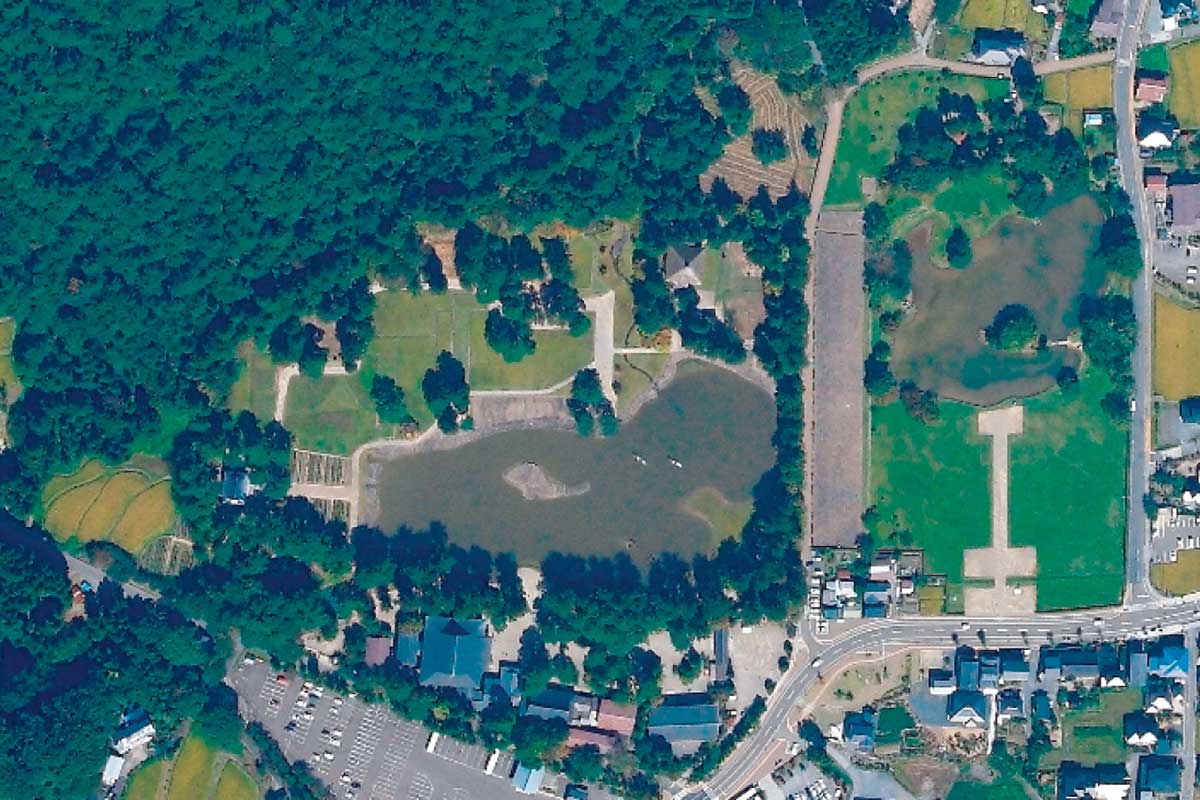
Mōtsū-ji Keidai Tsuketari Chinjusha SiteSpecial Historic Site
Mōtsū-ji Gardens Special Place of Natural Beauty
Former Kanjizaiō-in GardensPlace of Natural Beauty
The Mōtsū-ji Keidai (left) and Kanjizaiō-in (right) have been restored and reproduced based on results of excavations.
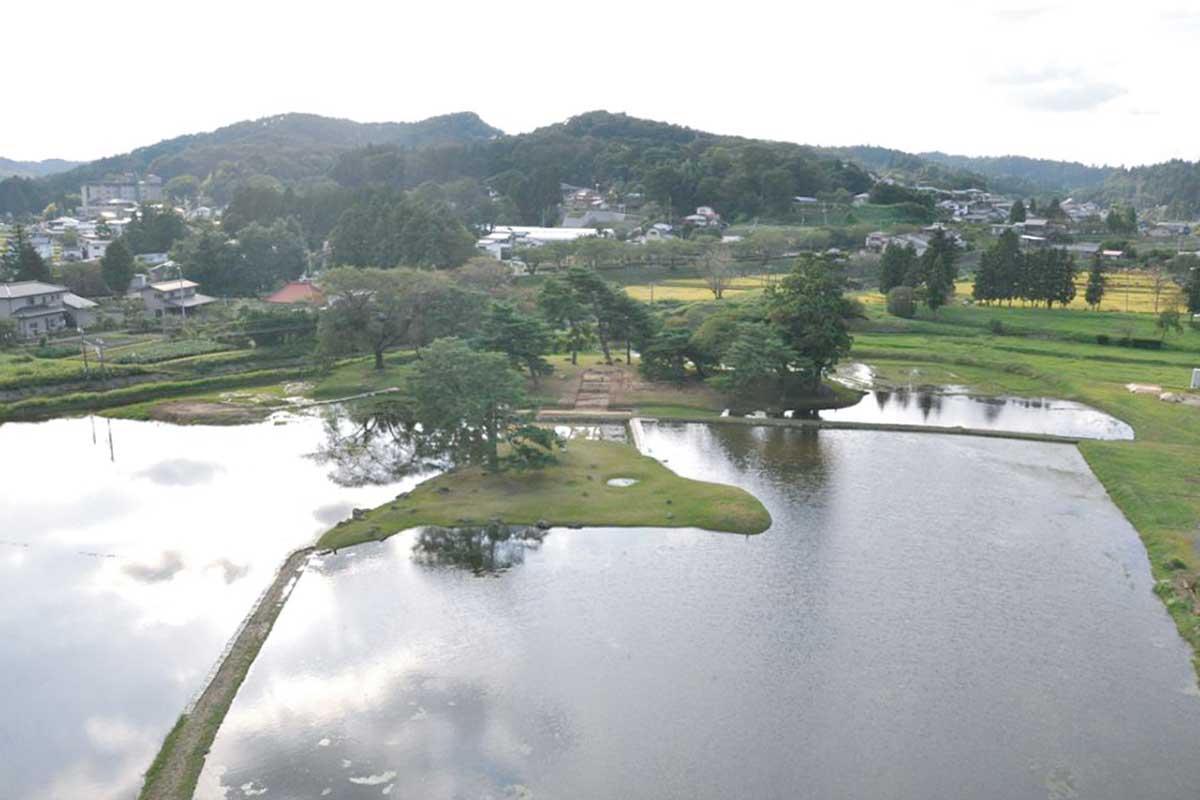
Muryōkō-in Ato Special Historic Site
This is thought to be the final form of Jodo gardens developed in Hiraizumi. It represents the world of Jodo in unison with the mountains in the background.
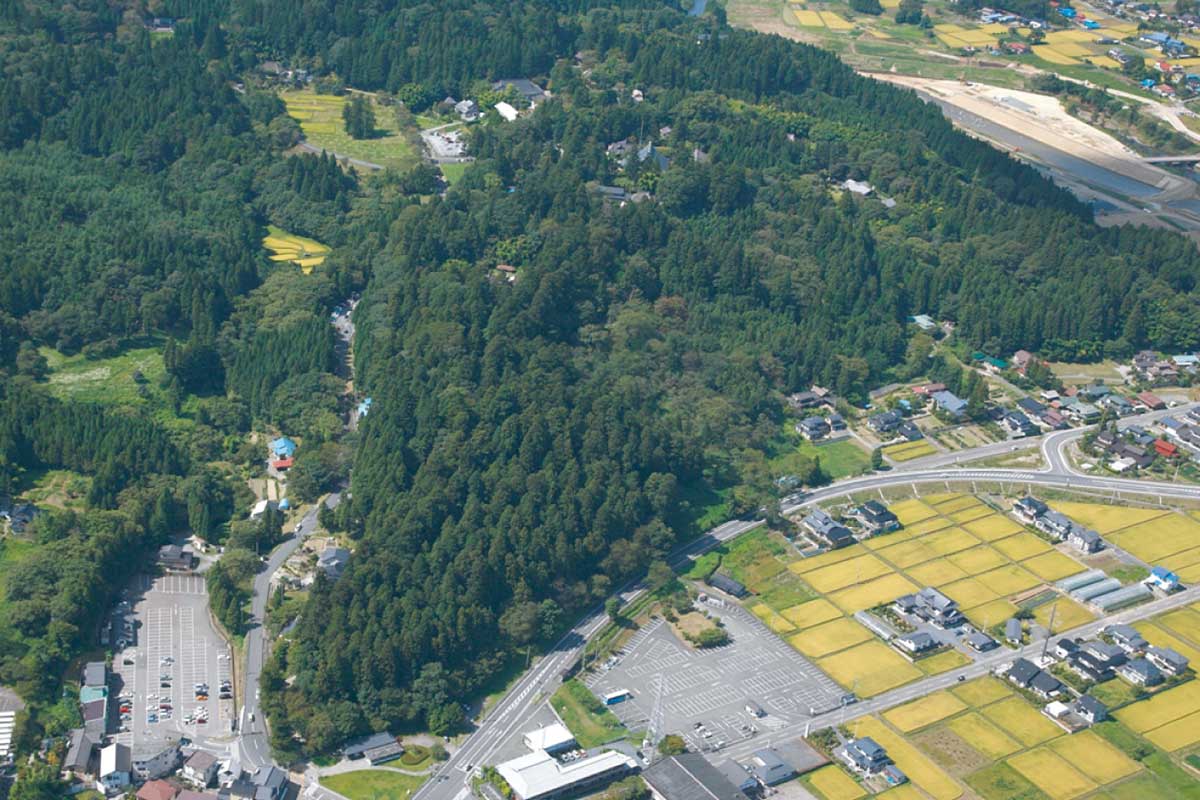
Chūson-ji Grounds Special Historic Site
The site of a 12th century temple is preserved in good condition below these wide grounds.
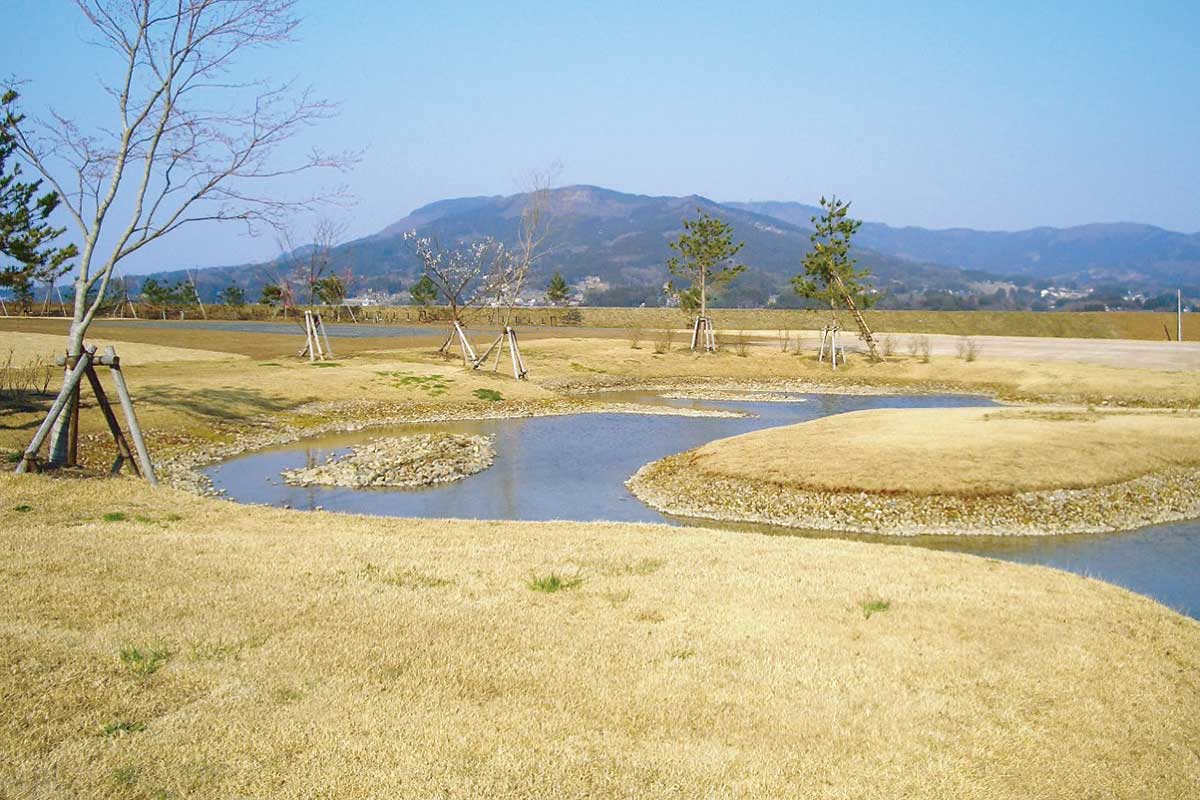
Yanaginogosho / Group of Hiraizumi Remains Historic Site
This is thought to be the remains of the Oshu-Fujiwara government administration “Hiraizumi-no-Tachi.” It is registered on the provisional list as an extended property of the “Hiraizumi” World Heritage as a site for the political and government bases of Hiraizumi during the 12th century.
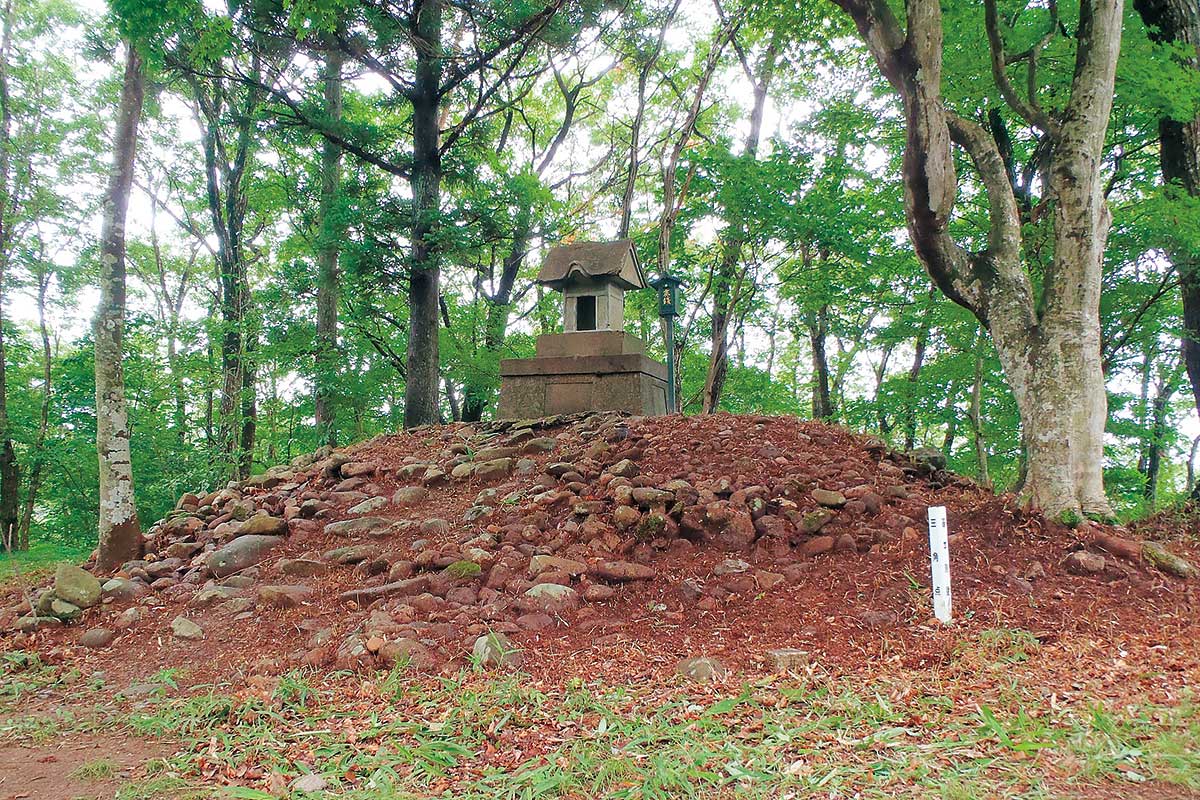
Mt. Kinkeisan Historic Site
One of Hiraizumi’s landmarks, it has become the standard for town development. It is also a mountain of faith in which a sutra mound was built at the summit, and has a close relationship with temples such as Muryōkō-in.
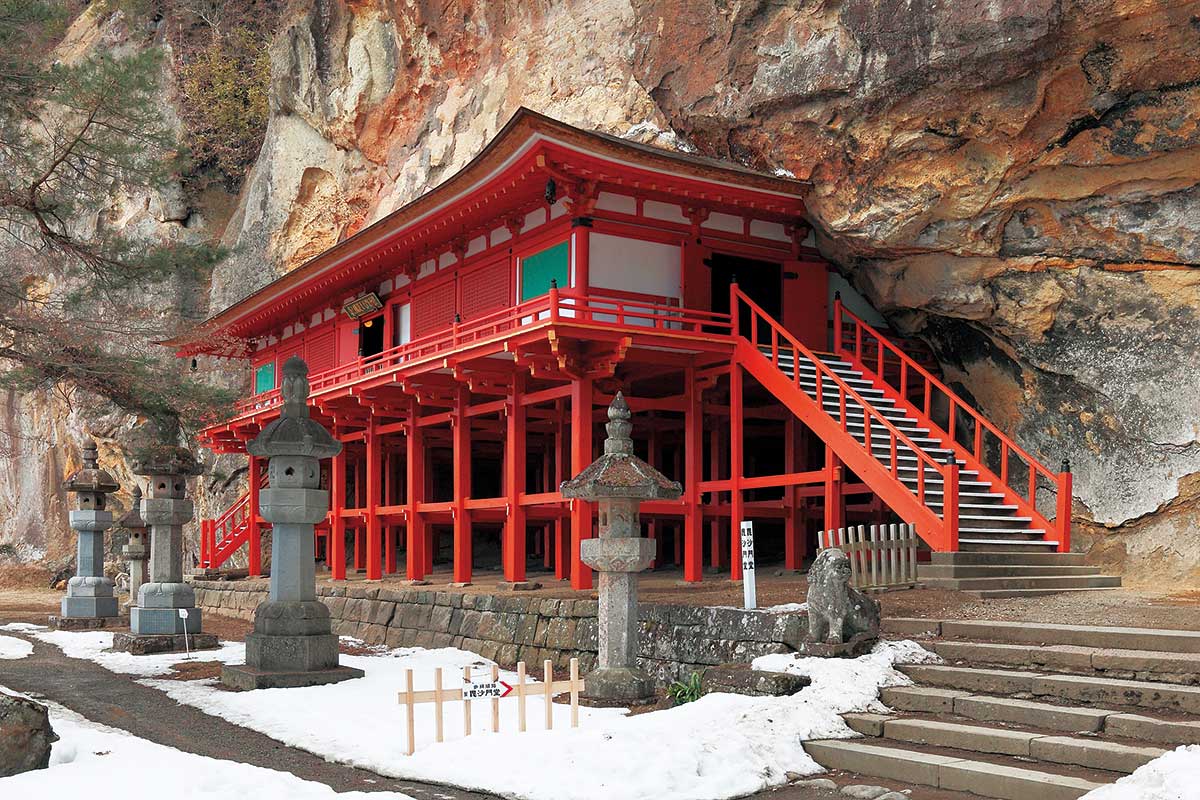
Takkoku-no-IwayaHistoric Site
According to temple records, this is the oldest temple in Hiraizumi, dated to 1200 years ago. The statue of Buddha carved into a cliff on the grounds is considered to be a 12th century image, and pond sites from the time confirm this. It is registered on the provisional list as an extended property of the “Hiraizumi” World Heritage
Gardens Representing Jodo
-Jodo Gardens-
Many temples were constructed in Hiraizumi by all generations of Oshu-Fujiwara. In particular, gardens were created centering Buddhist temples representing the “Buddhist Land (Jodo) that were the world of Buddha, and on ponds that were the nucleus of Jodo. These gardens are often called “Jodo Teien.” Most especially, the Mōtsū-ji Gardens has maintained its complete original form, which is extremely important for understanding how Jodo gardens were developed in Japan. In addition, the philosophy and technology behind these landscape gardens developed in Hiraizumi were given high praise when registered as a World Heritage Site as Japanese culture led to a unique development as a result of cultural exchanges with the rest of Asia.
Mōtsū-ji Gardens Special Historic Site / Special Place of Natural Beauty
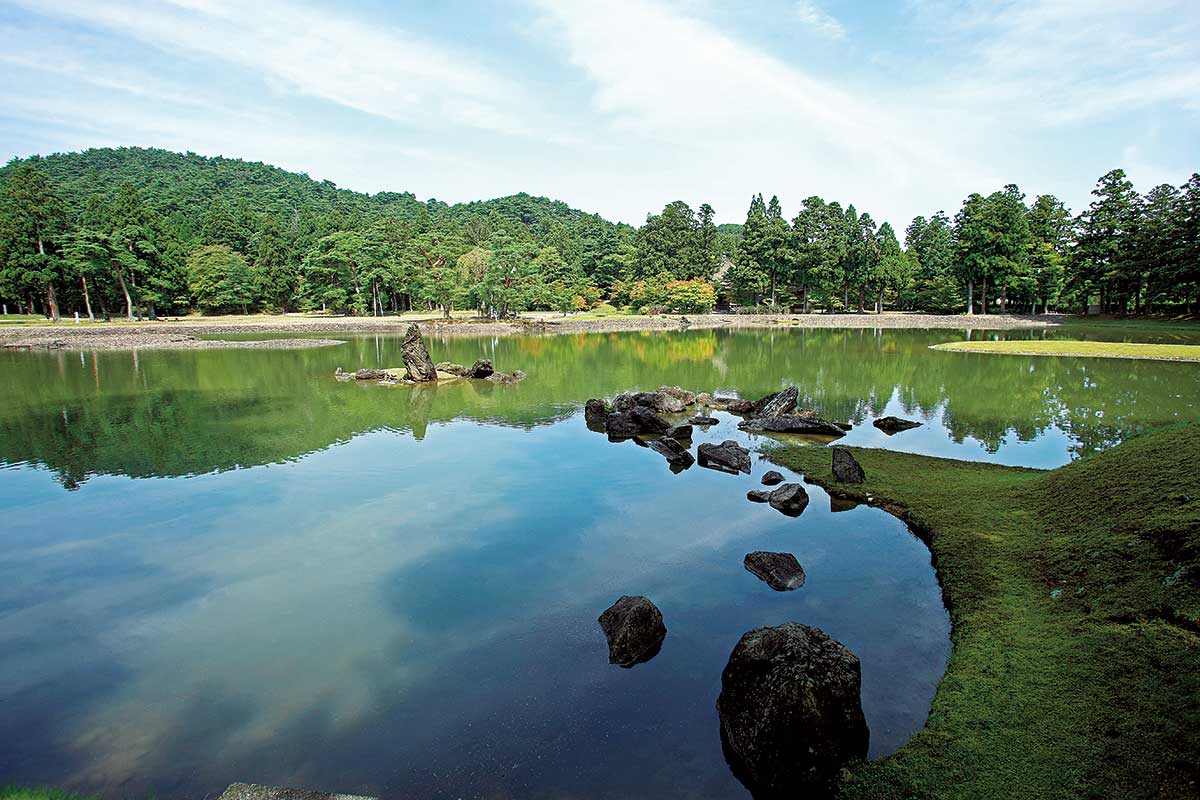
Together with the Mōtsū-ji Gardens, Kanjizaiō-in, Muryōkō-in Ato, and the Oike Temple Site of Chūson-ji were recognized as gardens representing the Buddhist Land (Jodo) and having remarkable universal value as a World Heritage.
Muryōkō-in Ato Special Historic Site
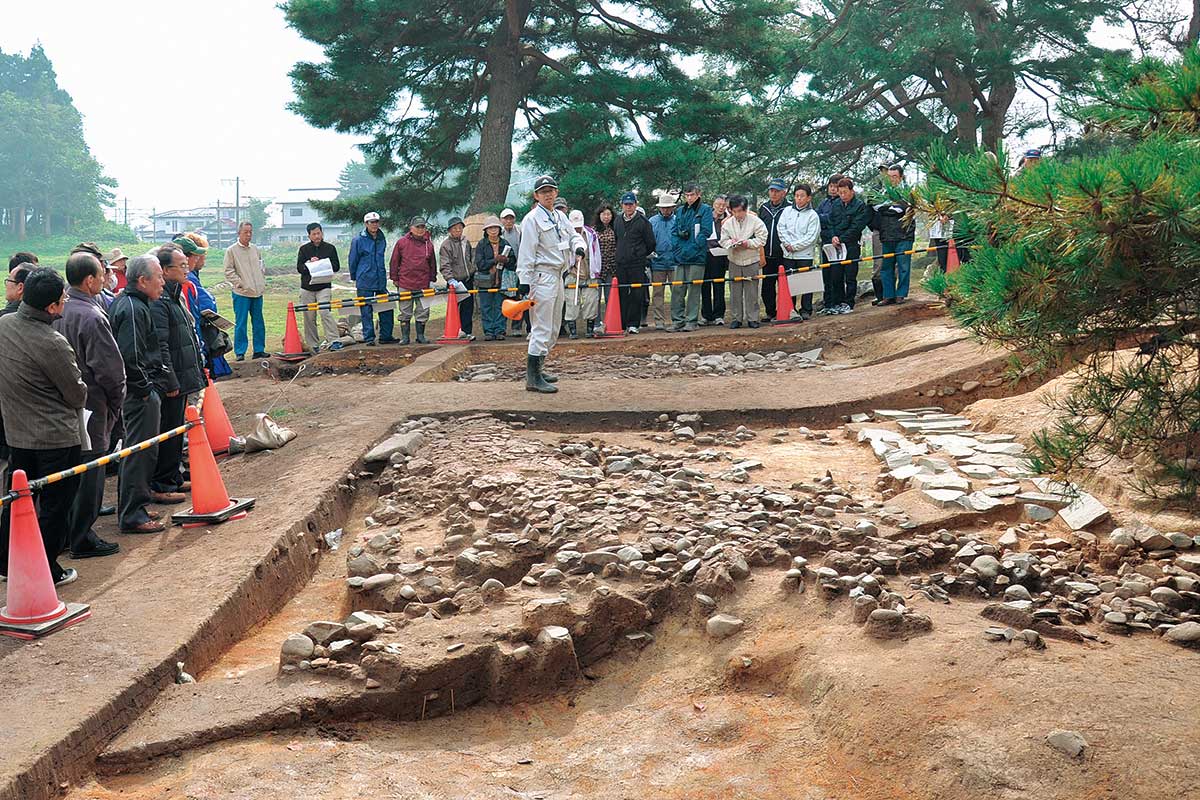
Explanatory meeting on Muryōkō-in Ato
Plans for the restoration and reproduction of this site have been put in place, and are underway with excavations and a project to reproduce the pond.
Chūson-ji Oike Temple SiteSpecial Historic Site
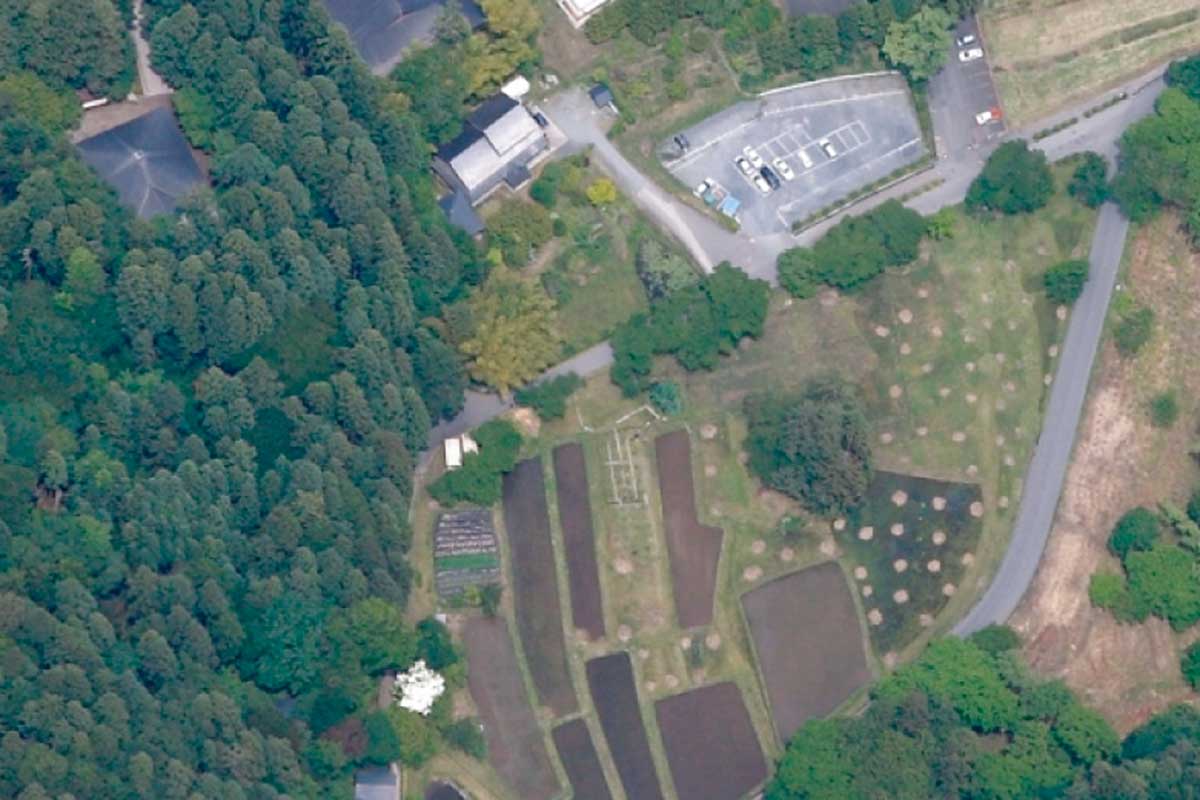
Chūson-ji Oike Temple Site
Surveys to confirm the site at the center of the gardens are proceeding, and projects to maintain them are based on the results of excavations.
Sharing the Value of Properties
Except for the Konjikidō of Chūson-ji, Hiraizumi had lost all buildings by the Edo period, and there is nothing other than archaeological remains such as architecture that remained underground and pond landmarks that show the aspects of the time. Drawings of restoration and models based on academic research results are useful for understanding and sharing the value of Hiraizumi’s properties.
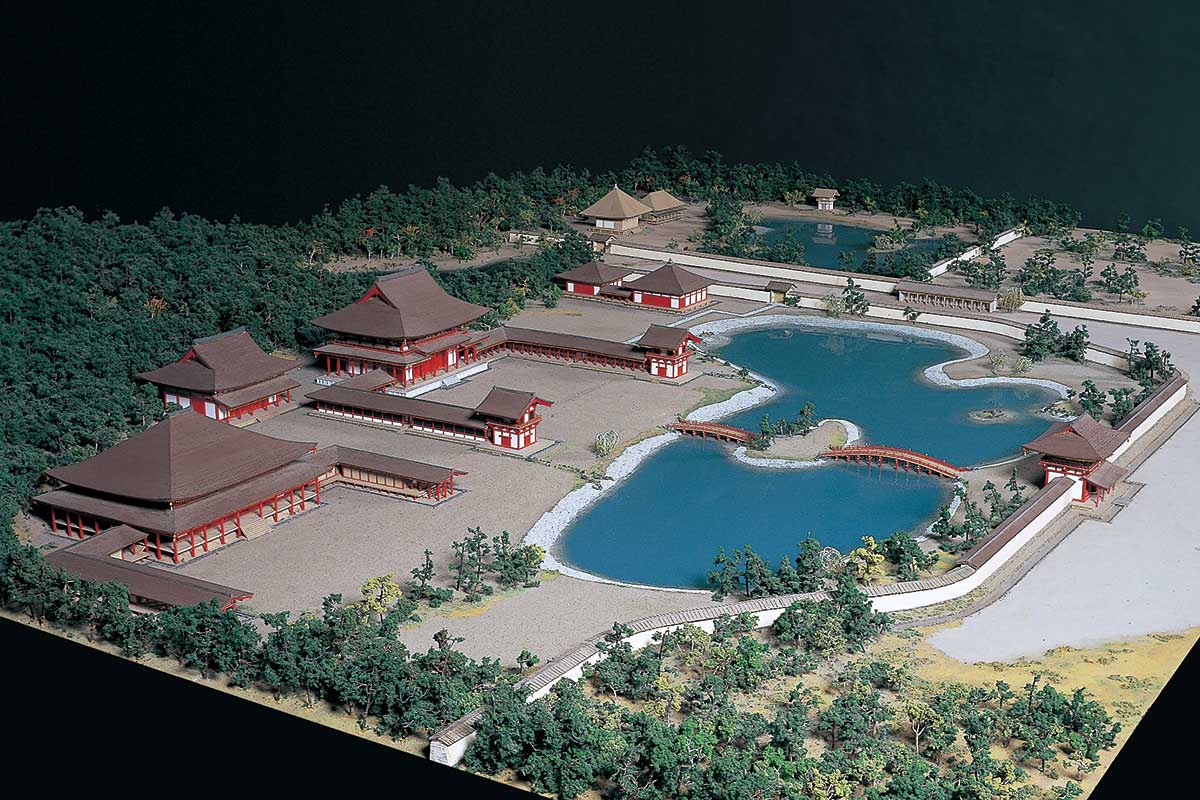
A model of the restoration of Mōtsū-ji and Kanjizaiō-in (Collection in Iwate Prefectural Museum)
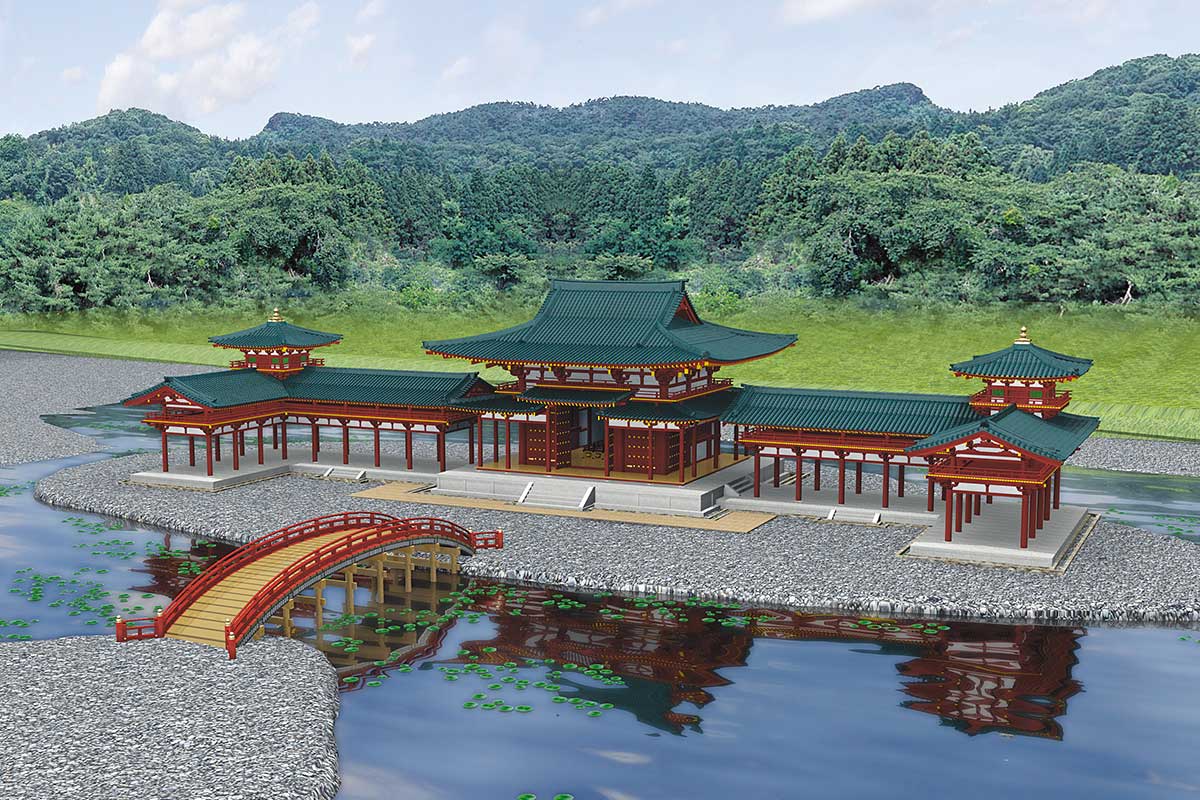
CG Restoration of Muryōkō-in